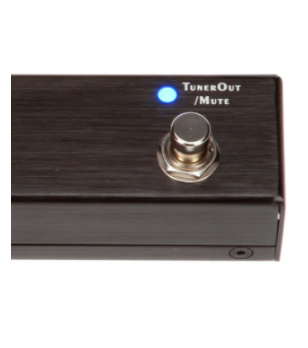Products Category
- FM Transmitter
- 0-50w 50w-1000w 2kw-10kw 10kw+
- TV Transmitter
- 0-50w 50-1kw 2kw-10kw
- FM Antenna
- TV Antenna
- Antenna Accessory
- Cable Connector Power Splitter Dummy Load
- RF Transistor
- Power Supply
- Audio Equipments
- DTV Front End Equipment
- Link System
- STL system Microwave Link system
- FM Radio
- Power Meter
- Other Products
- Special for Coronavirus
Products Tags
Fmuser Sites
- es.fmuser.net
- it.fmuser.net
- fr.fmuser.net
- de.fmuser.net
- af.fmuser.net ->Afrikaans
- sq.fmuser.net ->Albanian
- ar.fmuser.net ->Arabic
- hy.fmuser.net ->Armenian
- az.fmuser.net ->Azerbaijani
- eu.fmuser.net ->Basque
- be.fmuser.net ->Belarusian
- bg.fmuser.net ->Bulgarian
- ca.fmuser.net ->Catalan
- zh-CN.fmuser.net ->Chinese (Simplified)
- zh-TW.fmuser.net ->Chinese (Traditional)
- hr.fmuser.net ->Croatian
- cs.fmuser.net ->Czech
- da.fmuser.net ->Danish
- nl.fmuser.net ->Dutch
- et.fmuser.net ->Estonian
- tl.fmuser.net ->Filipino
- fi.fmuser.net ->Finnish
- fr.fmuser.net ->French
- gl.fmuser.net ->Galician
- ka.fmuser.net ->Georgian
- de.fmuser.net ->German
- el.fmuser.net ->Greek
- ht.fmuser.net ->Haitian Creole
- iw.fmuser.net ->Hebrew
- hi.fmuser.net ->Hindi
- hu.fmuser.net ->Hungarian
- is.fmuser.net ->Icelandic
- id.fmuser.net ->Indonesian
- ga.fmuser.net ->Irish
- it.fmuser.net ->Italian
- ja.fmuser.net ->Japanese
- ko.fmuser.net ->Korean
- lv.fmuser.net ->Latvian
- lt.fmuser.net ->Lithuanian
- mk.fmuser.net ->Macedonian
- ms.fmuser.net ->Malay
- mt.fmuser.net ->Maltese
- no.fmuser.net ->Norwegian
- fa.fmuser.net ->Persian
- pl.fmuser.net ->Polish
- pt.fmuser.net ->Portuguese
- ro.fmuser.net ->Romanian
- ru.fmuser.net ->Russian
- sr.fmuser.net ->Serbian
- sk.fmuser.net ->Slovak
- sl.fmuser.net ->Slovenian
- es.fmuser.net ->Spanish
- sw.fmuser.net ->Swahili
- sv.fmuser.net ->Swedish
- th.fmuser.net ->Thai
- tr.fmuser.net ->Turkish
- uk.fmuser.net ->Ukrainian
- ur.fmuser.net ->Urdu
- vi.fmuser.net ->Vietnamese
- cy.fmuser.net ->Welsh
- yi.fmuser.net ->Yiddish
Tuner on a Sidechain
Date:2020/3/6 11:55:57 Hits:

For electric guitarists and bassists, one way to help tidy up and disaster proof your signal flow is to put your tuner on a sidechain. A sidechain is a separate signal path that feeds from your main signal path, in this case directly to a tuner. The biggest advantage to this set up is that it puts one less element between your instrument and amplifier, which not only improves your overall sound but also saves one more opportunity for signal failure.
Every pedal introduces some sonic elements, engaged or disengaged, buffered or true bypass. Tuners are designed mostly for function and form, not necessarily tone. With a tuner on a sidechain, the question of how a tuner “sounds” in your rig is moot; it’s receiving an independent feed and not affecting the critical instrument-to-amplifier chain. This also allows for one less connection in your rig, which is one less chance for device or cable failure that can result in weird or no sound coming from your amp.
Another advantage to having your tuner on a sidechain is that the tuner is always active, allowing you to quickly tweak tuning while you’re playing. Some tuners make an audible pop or click when engaged, this method takes that out of the equation as well.
There are many ways to create a side chain, which will work for you depends upon how you set up your particular rig. The easiest way is to use a volume pedal that has a separate tuner output, such as the Ernie Ball MVP, Mission Engineering VM Pro, or Visual Sound Visual Volume, among many others. Bass amplifiers commonly employ a dedicated tuner out, check out the Gallien-Krueger MB500, the Aguilar Tone Hammer 350, or the Peavey Tour 700. The Tech 21 SansAmp Bass Driver has a parallel output that can be used for a tuner and other bass preamps such as the Radial Bassbone OD have tuner outs.
Some full-featured guitar amps, such as the Mesa/Boogie Mark V or Dual Rectifier, have a dedicated tuner out but a slave out or preamp out would also drive a tuner. If you use a pedalboard loop system, such as the One Control Xenagama Tail Loop or Iguana Tail Loop, they have a separate tuner output as well.
Another solution would be to use an A/B/Y switch. That would allow three options: instrument signal only, tuner signal only for silent tuning and instrument changes, or the combined signal so both tuner and instrument will be active. The Morley ABY is the economical solution or the Fulltone Custom Shop True-Path ABY-ST offers a variety of options. Although this method does introduce another pedal into your signal path, A/B/Y pedals are usually designed with switching and signal integrity in mind.
Whether to keep your tuner active or to remove an element from your signal path, placing your tuner on a sidechain can be helpful in cleaning up your rig and saving potential performance headaches.
Leave a message
Message List
Comments Loading...





